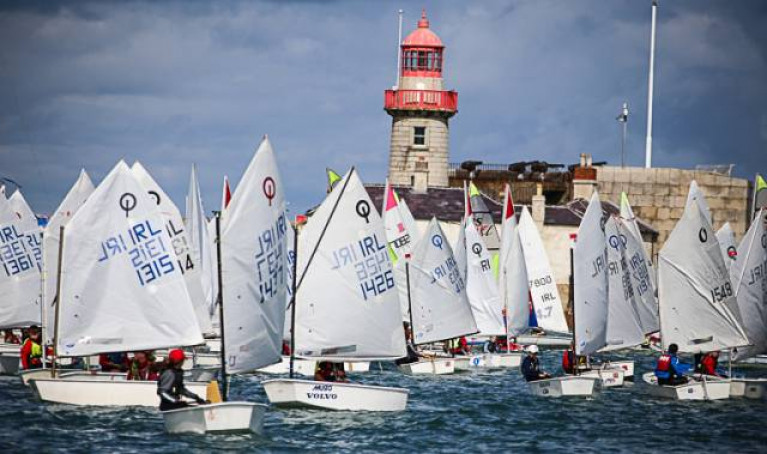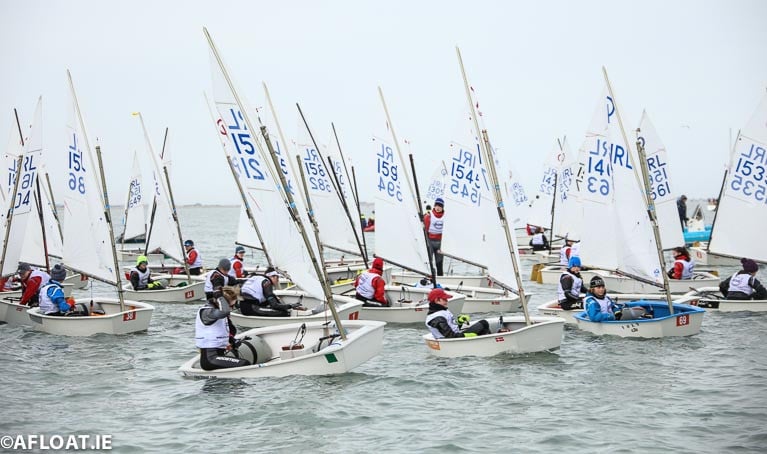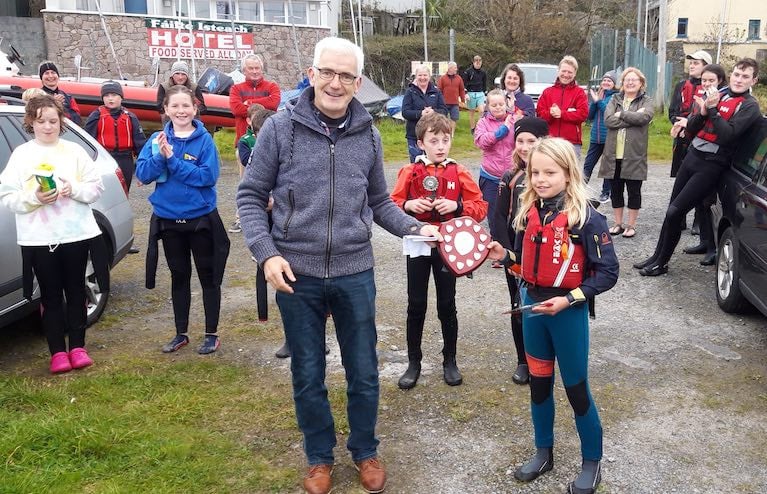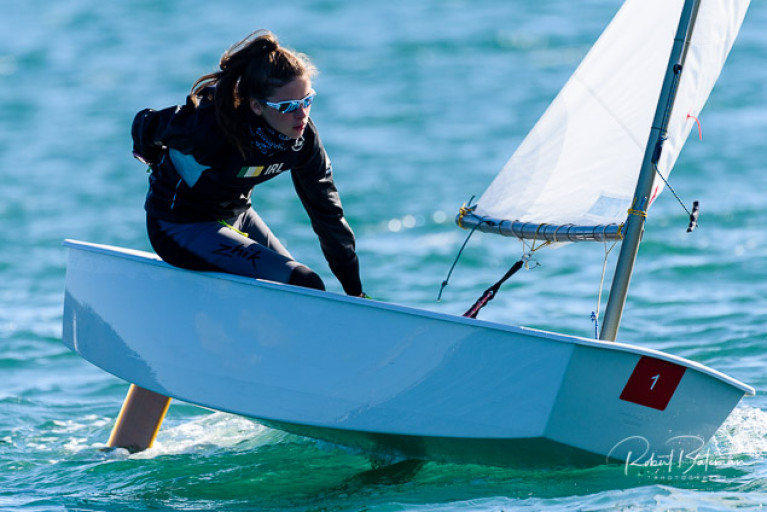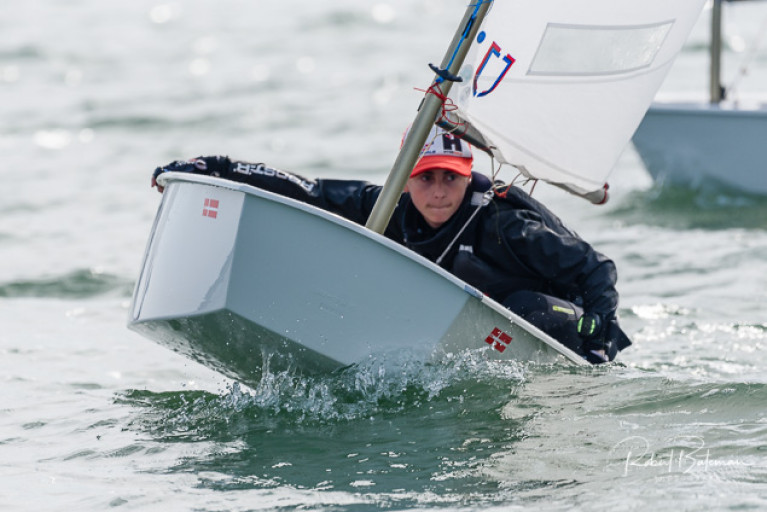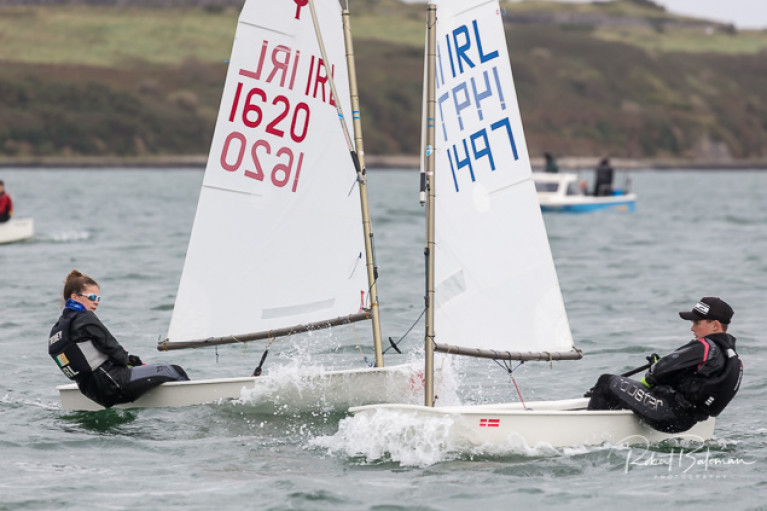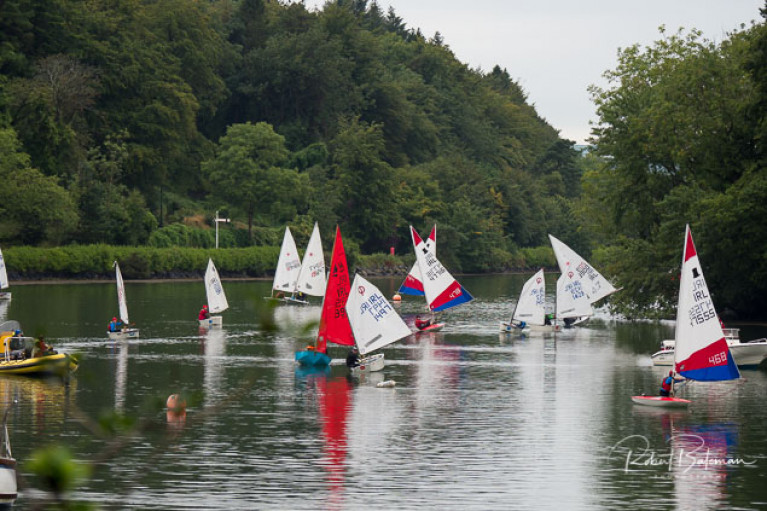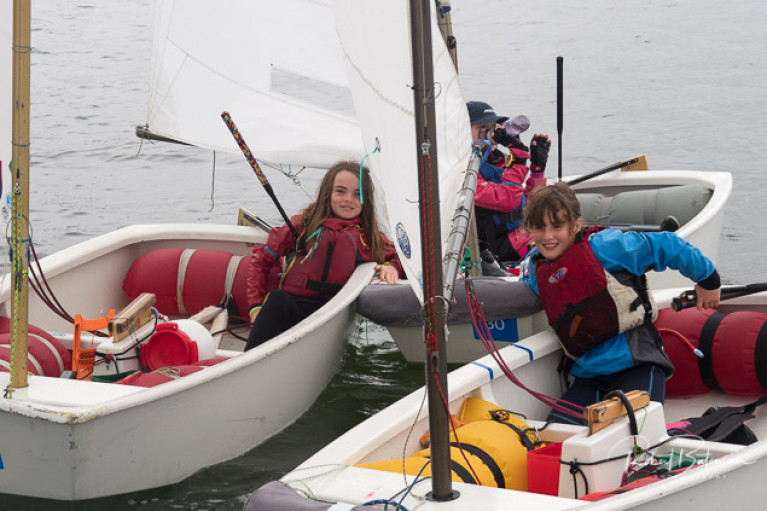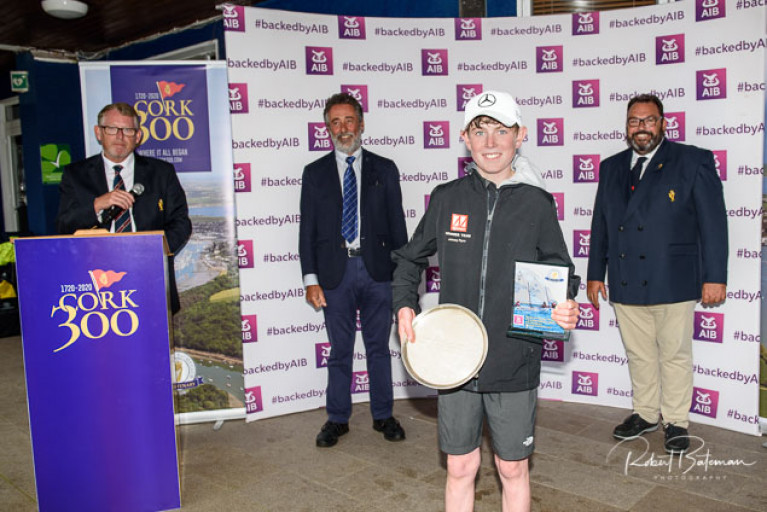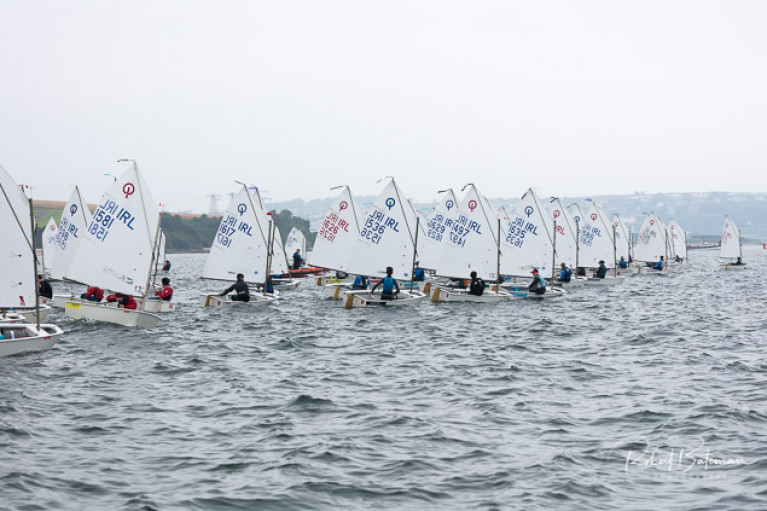Displaying items by tag: Optimist
Royal St George Yacht Club to Host IODAI Optimist Trials in May
The Royal St George Yacht Club in Dun Laoghaire Harbour will host the IODAI Optimist dinghy Trials on the May Bank Holiday Weekend, 1st – 3rd May 2021.
The trials event is a great opportunity for younger sailors to compete on home waters and against their peers representing the best Optimist sailors in Ireland.
The Royal St. George Yacht Club has a thriving optimist fleet comprising both beginners and those involved in competitive racing.
The event is subject to COVID restrictions and a back-up date of 5th – 7th June 2021 has been earmarked in the event that the proposed May date is not run.
 The Royal St George Yacht Club in Dun Laoghaire will host the IODAI Optimist trials
The Royal St George Yacht Club in Dun Laoghaire will host the IODAI Optimist trials
Commenting on the announcement, the RStGYC Optimist Class Captains, Sarah & Brendan Foley said that: 'We are delighted to host this important and much-anticipated regatta in the Optimist calendar. We will be working very closely with both Irish Sailing and IODAI over the coming months to ensure that the proposed event provides high-quality racing in a safe environment for all participants and supporters.
We are looking forward to getting back out on the water as soon as permitted and to build on the progress made by our sailors in the DOGs (Dun Laoghaire Optimist Group) training programme.
Irish Optimist Dinghy Association AGM Rescheduled to December 21st by Zoom
The Irish Optimist Dinghy Association (IODAI) Annual General Meeting originally scheduled for Sutton Dinghy Club this Sunday has been rescheduled and will now take place at 20:30 on Monday the 21st December by Zoom online webinar.
Members wishing to attend must Pre-Register by e-mailing [email protected] by 13:00 on Friday the 18th December.
The AGM notice on the IODAI website has been updated here.
Spiddal Optimist Dinghies Resume Regatta Racing with Keen Contest
In spite of fresh westerly conditions, the Optimist fleet in Spiddal, Co Galway completed its series of races yesterday for last weekend’s club’s annual regatta.
The Optimist class had been unable to begin their first race at the Cumann Seoltóireachta an Spidéil (CSS) regatta on September 19th, due to north-easterly winds which pushed the fleet below the start line.
However, six boats from the Spiddal club turned out on September 27th, with commodore Dave Cahill acting as race officer.
First place went to Sarah Donald, with Rory McHale taking second place and Micheál Breathnach came third.
 The CSS resumed regatta Oppie competitors - from left, Katie Gaynor, Ciara Ní Chonghaíle, Michael Breathnach (3rd), Rory McHale (2nd), Realtiín Boinnard and Sarah Donald (1st) before the results were announced Photo: Bartley Fannin)
The CSS resumed regatta Oppie competitors - from left, Katie Gaynor, Ciara Ní Chonghaíle, Michael Breathnach (3rd), Rory McHale (2nd), Realtiín Boinnard and Sarah Donald (1st) before the results were announced Photo: Bartley Fannin)
 Oppie class second prize winner Rory McHale with CSS commodore Dave Cahill Photo: Bartley Fannin
Oppie class second prize winner Rory McHale with CSS commodore Dave Cahill Photo: Bartley Fannin
Also competing in the close run series of three races were Katie Gaynor, Ciara Ní Chonghaíle and Realtín Boinnard - with Realtín receiving a special award for unl\uckiest competitor, \Katie winning the hardest trier category, and Ciara being awarded for best recovery.
Sarah Donald was also awarded the perpetual trophy for the Optimist fleet, which was presented to the club several years ago by former club commodore Dr Tiernan O’Brien.
As Afloat previously reported, the annual CSS regatta on September 19th marked the presentation of the inaugural John and Stephanie Hannan Award, in tribute to the late circuit court judge, sea kayaker and CSS member John Hannan who died earlier this year.
His wife Stephanie Adams has been junior organiser at CSS for a number of years, and their son Marcus is an active sailor and won third prize in the mixed fleet class at the regatta.
The new award – a dinghy on bog oak made by Spiddal-based glass artist Sue Donnellan was presented by Stephanie Hannan to Mark and Denise De Faoite, who were fastest adult sailors in the 420 fleet.
Winners of the 420 class at the CSS regatta were Ciaran Reaney and Cathal Conneely, with Mac O’Brien and Eoin Cahill taking second place.
Sadhbh Laila Riggott and Catherine Harvey took first in the mixed fleet, sailing a Laser Pico, with Alanna Ní Thuairisg and Kate Ní Chonghaíle taking second place in a Topaz Uno.
Royal Cork's Twomey to the Fore at Optimist Burns Trophy (Slideshow below!)
After eight races sailed at Royal Cork Yacht Club, the host club's Alana Twomey continues to lead the club's Optimist Burns Trophy main fleet in Cork Harbour.
JP Curtin continues in second place in the 26-boat fleet, three points behind Twomey after two discards have been applied.
Oisin Pierse is third but did not compete in either race seven or eight, so now trails 14 points behind Curtin.
As Afloat reported previously, RCYC's Burns Trophy is now in its 26th year and this year's edition has had ideal racing conditions so far.
Two races, plus one for fun, is the format under the command of Race Officer Andrew Crosbie.
Bob Bateman's photo gallery is below and results are here.
Optimist Burns Trophy Photo Gallery - September 26
Twomey Still Leads After Six Races Sailed at Royal Cork's Optimist Burns Trophy (Photo Gallery Here!)
After six races sailed with one discard at Royal Cork Yacht Club's Optimist Dinghy Class Burns Trophy Alana Twomey continues to lead the 24-boat main fleet in the month-long Cork Harbour series at Crosshaven.
Lying second overall is JP Curtin with third place taken by Oisin Pierse.
As Afloat reported previously, RCYC's Burns Trophy is now in its 26th year and this year's edition has had some ideal racing conditions so far.
Two races, plus one for fun, is the format under PRO Andrew Crosbie.
Bob Bateman's photo gallery is below and results are here.
Alana Twomey Leads Royal Cork Yacht Club's Burns Trophy for Optimist
After four races sailed at Royal Cork Yacht Club's Optimist Dinghy Class Burns Trophy Alana Twomey leads the 24-boat main fleet in the month-long series.
Lying second overall is JP Curtin with third place taken by Oisin Pierse.
RCYC's Burns Trophy is now in its 26th year and this year's edition has had some ideal racing conditions so far.
Two races, plus one for fun, is the format under the stewardship of PRO Andrew Crosbie.
Bob Bateman's photo gallery is below and results are here.
Optimist Dinghy Sailor Wins Royal Cork's Revived Coolmore Race
The Coolmore Race is an old Cork Harbour yacht race that has been brought back to life by Royal Cork Yacht Club after many years.
After a day of torrential rain, the downpour stopped and sadly the wind died with it. After the dinghies were launched they were towed up the Owenabue River to the start at Coolmore Estate.
The 50 competing boats started at the top of the tide and had the benefit of the ebb for a race back to the RCYC clubhouse. However, the course was shortened and the first boat to finish was James Dwyer (Matthews) in a Laser 4.7 but close on his heels came JP Curtin in an Optimist and won the Trophy.
Coolmore Photo slideshow by Bob Bateman below
Last weekend's AIB Optimist National Dinghy Championships at Royal Cork Yacht Club featured a 36-boat Regatta Fleet that features an introduction to sailing and welcomes children from 8-15yrs.
The fleet is designed to give children coaching and confidence in a fun atmosphere at an IODAI event with an emphasis on training. All this was certainly evident over the four days at Royal Cork Yacht Club, the hosts for the 2020 event where the regatta fleet sailed in the sheltered waters of Cork Harbour.
In the Regatta fleet racing, the Bateman family had great success with local sailor Ethel Bateman taking first place, closely followed by her brother Olin in second. Third place went to Henrietta Leech from Lough Ree Yacht Club, in fourth place was Fionn Hayes RCYC/MBSC and Maria Butler NYC finished in fifth place.
Bob Bateman's Optimist Regatta Fleet SlideShow is Below
Howth Yacht Club teen Johnny Flynn overtook local ace and regatta leader Ben O'Shaughnessy to clinch the AIB sponsored Optimist Nationals by a single point at Royal Cork Yacht Club today.
After four days of racing on the Curlane Bank and outside Cork Harbour, the Dubliner finished the ten-race light-air event on a tally of 16 points to the Crosshaven boy's 17.
Anthony O’Leary was the Race Officer for the Main Fleet and Barry Rose officiated for the Regatta Fleet.
 Second overall - Ben O'Shaughnessy of Royal Cork Yacht Club Photo: Bateman
Second overall - Ben O'Shaughnessy of Royal Cork Yacht Club Photo: Bateman
 Third overall Rocco Wright of Howth Yacht Club Photo: Bateman
Third overall Rocco Wright of Howth Yacht Club Photo: Bateman
Flynn's club mate, 14-year-old Rocco Wright, finished in third on 30-points in the 79-boat main fleet.
The National Yacht Club's Clementine van Steenberge was the first girl in fifth overall.
 The National Yacht Club's Clementine van Steenberge was the top girl in fifth overall Photo: Bob Bateman
The National Yacht Club's Clementine van Steenberge was the top girl in fifth overall Photo: Bob Bateman
The fight for gold in the 36-boat Junior Championships came down to who beat who in the final race and the NYC's Caoilinn Geraghty-McDonnell beat Des Turvey of Howth with Riona McMorrow Moriarty in third.
 Junior National Champion is Caoilinn Geraghty-McDonnell of NYC
Junior National Champion is Caoilinn Geraghty-McDonnell of NYC
A 34-boat Regatta fleet was won by RCYC's Ethel Bateman who beat her brother Olin. Third place went to Henrietta Leech from Lough Ree Yacht Club.
 Regatta champion Ethel Bateman of Royal Cork
Regatta champion Ethel Bateman of Royal Cork
Prizes were presented by Royal Cork Admiral Colin Morehead, event organiser Brian Jones and IODAI President Tim Lucas.
Overall results are here
Bob Bateman's 2020 Optimist Championship Prizegiving slideshow below
Royal Cork's Ben O'Shaughnessy Continues to Lead Optimist Championships on Home Waters (Slideshow Here!)
After seven races sailed in light and tricky conditions in Cork Harbour, local Optimist dinghy ace Ben O'Shaughnessy of Royal Cork Yacht Club continues to lead the AIB sponsored National Championships overall.
The 79-main boat fleet sailed again on day three of the championships on the Harbour's Curlane Bank in light winds.
The 14-year-old Crosshaven sailor is now nine points clear of nearest rival Johnny Flynn of Howth Yacht Club. Flynn has a similar cushion on his Dublin clubmate, Rocco Wright, in third place on 29 points. Full results are here
See Bob Bateman's photo slideshow below



























